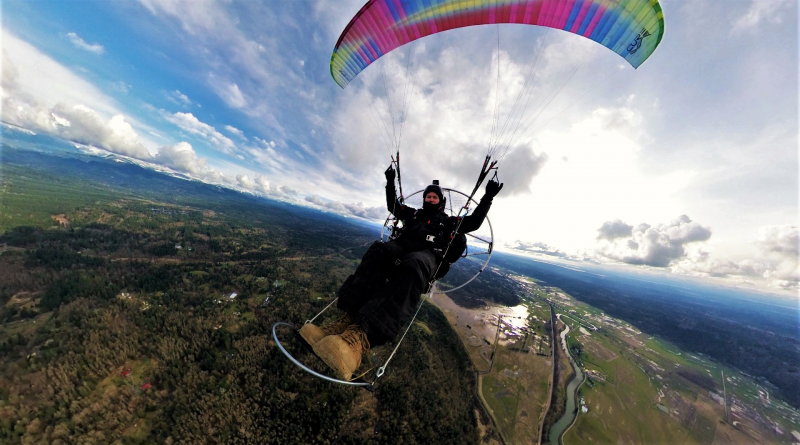Entrepreneurial endeavors can be a risky business, unless you’re already doing your work as a hobby. After moving to a cabin in the Cascade Mountains, Dmitri Zyuzin found himself watching more and more paramotor (powered paraglider) videos with a building desire to fly.
“One day I was driving home looking at our field and then looking up at the mountain behind it which is when I realized that it's time to follow my flying dream,” Zyuzin explains.
Rather than invest the money in purchasing a flying unit, he decided to take a much riskier approach, “teaching myself the needed skills to fly and building a homemade paramotor unit.”

“A little under three years ago I took my first real flight from that mountain without a motor and also eventually with the motor I made. I've had many engines explode mid-flight and gone through more engine outs in a few months than most pilots go through in their entire flying career.”
After some trial and error engineering, Zyuzin decided to switch to using proven engines. “I've been flying for almost three years now and have built my life around it. I have since left the mountains and bought a new home with a couple of small spaces and got a Tormach 1100M and set up finishing stations.”
The most recent paramotor that he’s built is actually a pre-production prototype for starting his company, Iris Paramotor.
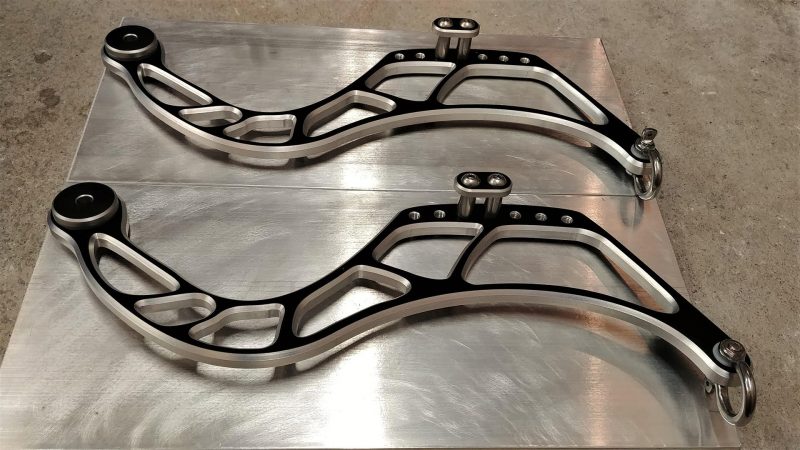
Machining Aerospace Parts
Zyuzin explains that there are quite a few CNC parts on his paramotor design. “In particular, the biggest challenge, and the reason I got a 4th axis on my Tormach, are these angled adapters that convert square tube sections to round.” Which makes the whole core frame that looks like the image below.
His parts have gotten a lot of attention in the Tormach Operators Group on Facebook. Particularly, the primary suspension arms, which are articulating arms that connect the machine to the wing and articulate to allow for weight-shift turning.
“The suspension arms do not fit into my machine. The main reason I got the 1100M is that it's the closest in size to what I needed, but these arms are 18" long. When placed on the Tormach's 18" max travel table, they leave no room for the tool width. So, I had to design my fixturing and CAM programs diagonal and just barely made it work.”
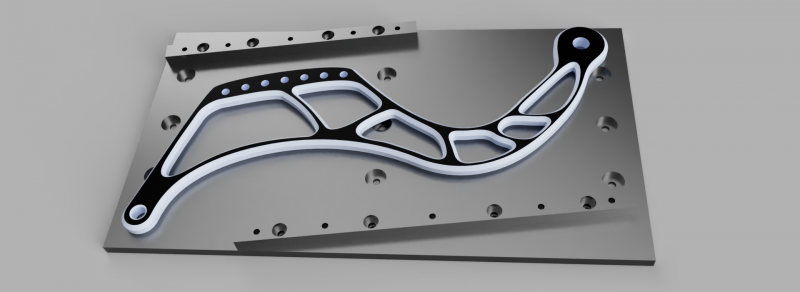

“I had to get creative and machine a fixturing system that holds the parts in the mill diagonally,” Zyuzin continues. “The first op holds the full bar of stock (18” x 8” x 0.5") and before the finishing profile, I bolt it to existing holes below. I have since simplified and reworked the fixture plate a few times and it works great. It's nice and simple.”
With the final product being used to literally give people flight, he needed to make sure the parts were like any other aerospace component, strong and lightweight. “The shape of the primary suspension arms was actually determined using simulations and shape optimization algorithms, so the aesthetic element on those was actually ‘function over form,’ but the resulting organic shape helped drive the whole design.” He explains, “In terms of the whole unit, the biggest challenge was actually engineering the whole frame in a way that can be machined and fabricated, where parts can be interchangeable between the individual frames. The level of precision is very high, and any mistake in fixturing or machining will result in a frame that doesn't line up correctly.”

A Unique Metal Finishing Process
Zyuzin also uses a finishing process that is a bit under the radar for most folks. He does powder coating, but uses infrared lamps for the curing process. “I actually came up with the idea, but like most other good ideas, it has already been done before, so doing some research led me onto a few projects other people built that gave me confidence that it would work. I use an array of high-power paint curing lamps in an aluminum enclosure with a cover that can fit all of my parts in terms of size.”
“The whole bar of aluminum is powder-coated a matte black before machining and after the parts are fully machined I use a transparent candy color over the whole thing. The anodized look comes from having freshly machined surfaces and really good quality powder”
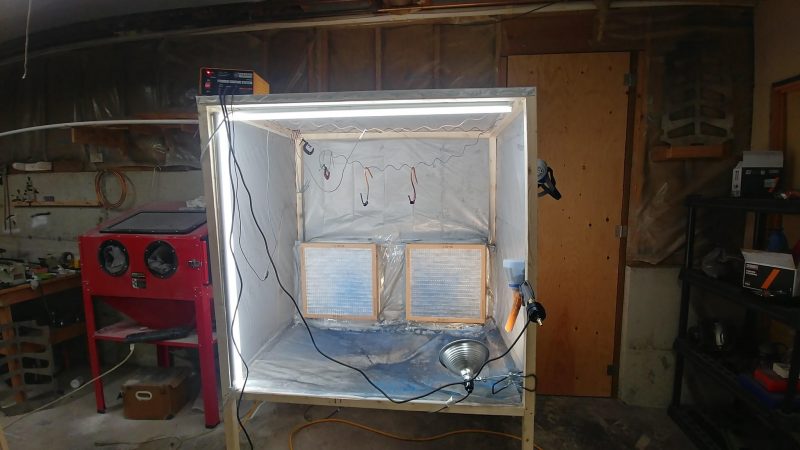
Using infrared lights for curing instead of traditional heating elements means that the air inside the enclosure doesn’t need to heat up. This leads to faster curing times, as well as less power consumption. “The whole cycle on smaller parts can be around 20 minutes from completely cold to fully-cured.” Zyuzin continues, “The reason is that the lights reflect on the aluminum enclosure but absorb into the powder itself which also heats up the aluminum. Another advantage is the oven/part size. An industrial oven big enough would cost several thousand dollars and would use a tremendous amount of power just to heat up. These lights swivel inside so I can cover parts of different sizes.”
Don’t miss a future post that goes more in-depth with Zyuzin’s finishing process by subscribing to the Tormach Blog.
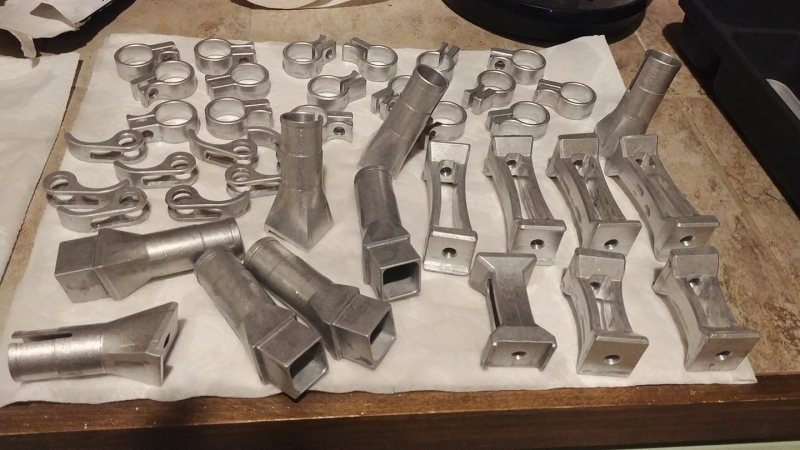
Launching a CNC Business
Zyuzin is working to pursue his passion with his paramotor design, launching a business and working towards production machining. “The next step is actually to optimize the production system as a whole as well as individual CAM programs and start firing off batches of parts.”
“I have set up my current chapter in life completely around transitioning my passion into a business producing paramotors for other people. In the last few months, I have been engineering, producing/optimizing CAM programs, fixtures, and hunting down all the required parts and components.”
His parts are beautiful and he’s living proof that his products work! Check out Iris Paramotor on Facebook and Instagram to see what Dmitri is up to.
